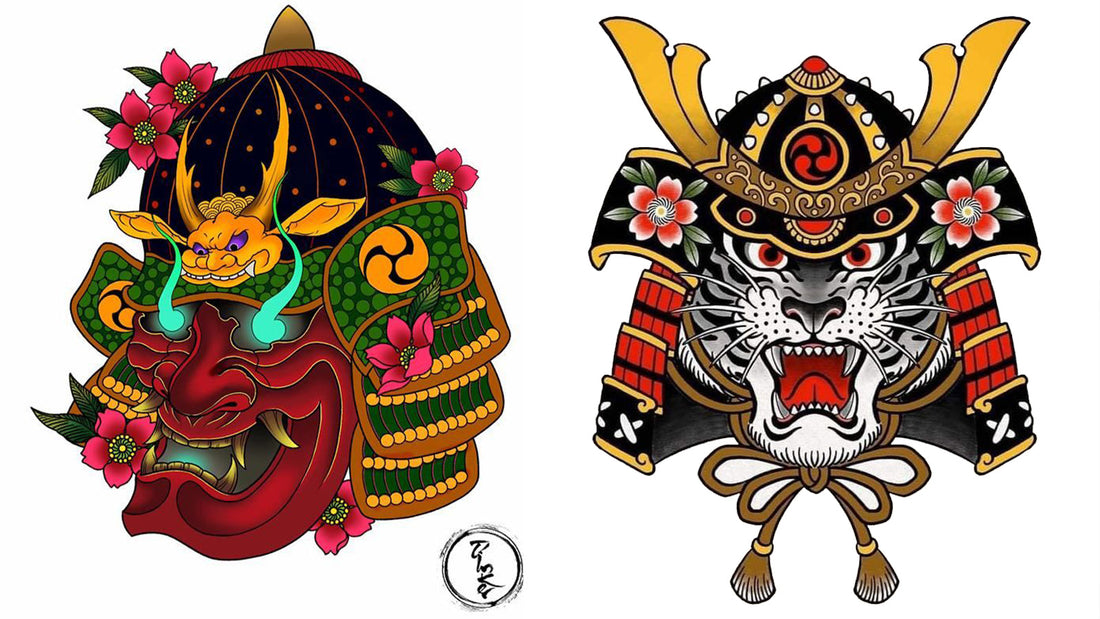
Kabuki Tattoo: Ideas and Inspirations
Understand Kabuki tattoos and find your perfect design
A Kabuki tattoo draws inspiration from Japanese Kabuki theater, known for its colorful makeup and iconic characters. These tattoos are detailed, featuring strong symbolism, and represent a unique fusion of art, history, and Japanese culture.
A bit of history: The origins
Kabuki theater originated in Japan in the 1700s, telling stories through characters with intense emotions or distinct roles, such as a clever traitor, a greedy king, or a romantic prince. The actors’ elaborate costumes and makeup have inspired tattoo artists worldwide.
Explore the kabuki inspired tattoos meanings
Kabuki tattoos are designed to convey emotions, principles, or significant ideas.
-
Kabuki Masks: These masks exaggerate emotions and use secondary colors to symbolize their meaning. For example, red signifies bravery, black represents revenge, and blue conveys calmness.
- Mythical Kabuki Characters: These designs focus on values like loyalty, honor, or strength rather than emotions.
Best placements for your traditional kabuki
The placement of a Kabuki tattoo depends on its size and shape.
- Back: Ideal for large, intricate designs.
- Arms: Suitable for tall characters or masks.
- Legs: Great for detailed designs along the thigh or calf.
- Shoulders and Chest: Perfect for round designs, masks, or Kabuki symbols.
How to Look After It?
Kabuki tattoos feature bright colors and intricate details, requiring proper care to maintain their beauty.
- Moisturizing Balm: Apply daily to prevent dryness and keep the colors vibrant.
- Sun Protection: Use SPF 50 to shield the tattoo from UV rays, which can fade the colors.
- Cleansing: During the healing phase, clean the tattoo with gentle soap. Once healed, use mild products to preserve its appearance.
Ideas and Inspirations








































FAQ
Are Kabuki tattoos traditional Japanese tattoos?
It comes from Japanese culture but it is a bit different from irezumi Art, which features more mythological or natural tattoos instead of theater characters.
Can Kabuki designs mix with other tattoo styles?
Yes, of course. They can be combined with other tattoo types like koi, waves, or kanji. They can also be mixed with styles such as chicano, old school, or sak yant. There are no strict traditional rules to follow.
What are the most popular Japanese tattoo designs?
Japanese tattoo designs offer a wide variety of options. The most popular ones include kanji, samurai, cherry blossoms, and waves. The best advice is to explore Japanese culture and choose a design or symbol that truly makes sense to you. If you need inspiration, we wrote an article : "Japanese tattoo: inspiration and Ideas"
How to choose the right Japanese tattoo artist?
It’s best to check the artist’s portfolio to see if they usually make Japanese designs.
We mainly recommend searching online for artists who specialize in this art. This way, you’ll be sure to get the result you expect. Keep in mind that specialized tattoo artists might be more expensive.